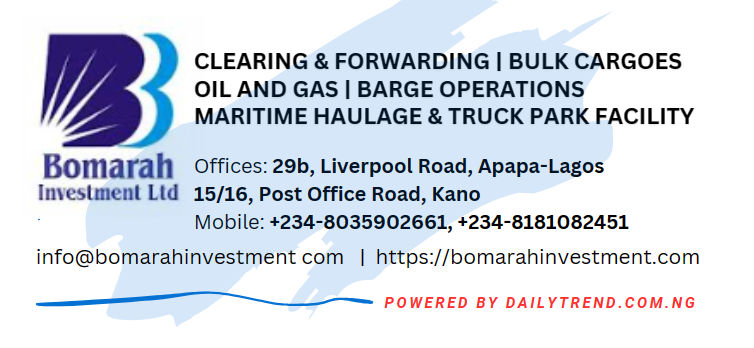Customs Begins Pilot Phase of Cargo Tracking At TICT Terminal

Compt Kunle Oloyede, Tin Can Customs Area Comptroller
By DAPO OLAWUNI
The Tin Can Island Command of the Nigeria Customs Service has said that it has commenced the pilot phase of tracking movement of containers and cargoes at the TICT Terminal in Lagos.
Compt Adekunle Oloyede, Area Controller of Tin Can Customs Command stated this last weekend while fielding questions from journalists on diversion of cargoes leaving the port for Inland Container Depot (ICD)
Even though he explained that cargo diversion does not occur at the Tin Can command, he said the command has commenced tracking of cargoes from TICT Terminal to bonded warehouses.
Compt Oloyede explained that Cargo Tracking is part of the Customs Modernization Project which is yet to commence.
He also corrected that the automation of the VIN Valuation with the code 846 is only taking place at Tin Can Island Port as a pilot phase and that it is yet to extend to other commands.
“There should be a cargo tracking note that can track movement of cargoes, but currently it is in the modernization project which is yet to commence.
“We are trying to do a Pilot Phase on tranzire cargoes with TICT, this involves movement of cargoes from TICT to some bonded terminals. It is ongoing and at real time, we know how the containers are moving along.
“Going forward, when we start the modernization project, this is one of the components, at anytime your truck stops, we shall know, and when such truck is diverted, we would know.
“There is another Cargo Tracking Note, that one is international, it is already being handled by the Federal Government to track both oil and non-oil cargoes” he said
Compt Oloyede also said the VIN Valuation 846 automation has not been introduced to other commands.
“Tin Can Island Port was used to pilot the application of the 846 automation so that we can deal with the challenges that comes with it before going national. Very soon it would be extended to other commands” he said
Compt Oloyede however lamented that since the scanners have been provided at the port, terminal operators and freight forwarders are shying away from getting containers scanned because of lack of compliance.
Comptroller Oloyede however revealed that the command has decided to procure mobile scanners that will be placed on the quayside to scan containers dropped from the vessels before they are taken to the stacking areas.
”What we intend to do is to buy more mobile scanners and place them at the quayside.
”As your container is dropped on the truck that will take it to the stacking area, it would be made to go through the mobile scanner at the quayside. This will make compliance level compulsory.
”This is because the mobile machines will be at the quayside where they can be moved from one end of the quayside to the other.
”Even, if I have two mobile machines, they are enough for me. We just place them side by side on the vessel and your truck we move through them.
“And the scanning will not be more than five seconds per container. I can scan up to 400 containers a day, even more, without analysis.
”I will just scan for record purposes but when it is time when the owner of the cargo is ready for the clearance process, that is when the risk management tool will tell me which of those containers I have already scanned and kept their records are going for scanning. This is when we scan and analyse.
”This is what we intend to do very very soon”, he said







